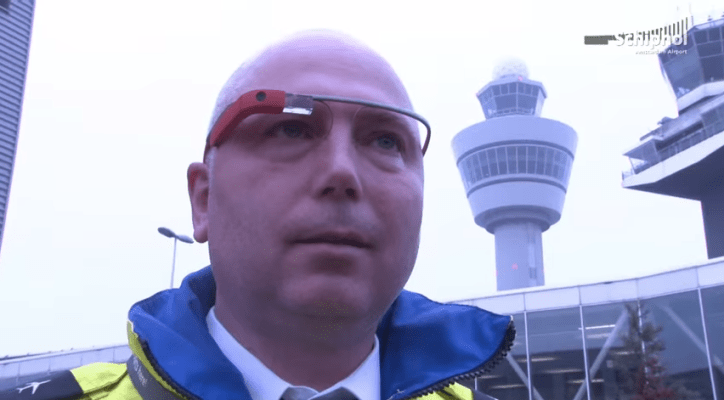One of Europe’s busiest airports, Amsterdam’s Schiphol hub in the Netherlands, is trialling Google Glass for use by airport authority officers as a hands-free way to look up gate and airplane information.
It’s also testing Google’s face computer on travelers passing through the terminal in a bid to better understand the ‘customer journey’, thanks to Glass’ first person perspective.
It’s more proof, if proof were needed, that Google Glass is another Segway — i.e. a technology not destined for the mass market, but for niche industrial and service industry applications. (Related: the Royal Military Constabulary at Schiphol sometimes gets around on Segways.)
Google has pulled back on ‘Glass for the masses’ — at least for now. It shuttered its Glass Explorer program last month. Although far from killing off Glass, it has handed the project to Nest’s Tony Fadell to oversee. Glass lives, as a standalone division within Google that’s yet to prove its worth — but which Google evidently isn’t willing to give up on, even though it’s been forced to have a rethink about its go-to-market strategy. And, in all likelihood, the entire product proposition/design of the hardware.
Glass has always been an uneasy hybrid, combining a pretty standard looking pair of specs with some nerdy and awkward add-ons, like a visible camera and a touch-sensitive surface that requires users stroke the side of their own head. With such mixed messaging, it’s no surprise consumers remain unconvinced. (Meanwhile Microsoft has tipped its hand in this space — outing its plans for an augmented reality headset called HoloLens last month which looks more tightly and sensibly focused on indoor entertainment.)
While consumers are rightly dubious about the utility of wearing camera-touting face computers in their everyday lives, given the social alienation that invites, a hands-free device for serving data on objects within the wearer’s field of vision has more obvious potential for businesses.
In the enterprise sector the promise of wearables is increased efficiency by speeding up the dissemination/capture of information to staff out in the field, or who are in the midst of work or customer engagement. So Glass just becomes another tool for a particular type of worker.
Given Glass’ visibility, it is perhaps especially suited for workers in a position of authority, who may already be marked out by their uniform (fluorescent jackets in the case of Schiphol’s authority officers), becoming another ‘badge of office’.
The airport started its trial of Glass last month, and has developed a Glass app which lets staff ask the device for gate or aircraft data and have the results displayed via the headset or on their smartphone. Another future feature the airport hopes to implement is the ability to measure the placement distance of barriers on the taxiway just by looking at them, rather than officers having to manually take measurements. It goes without saying that that’s going to require a very thin margin of error.
The airport is not committed to Glass beyond trialling it at this point. Any decision about whether the face computers will become a permanent fixture on staff will be taken next year, it said.
